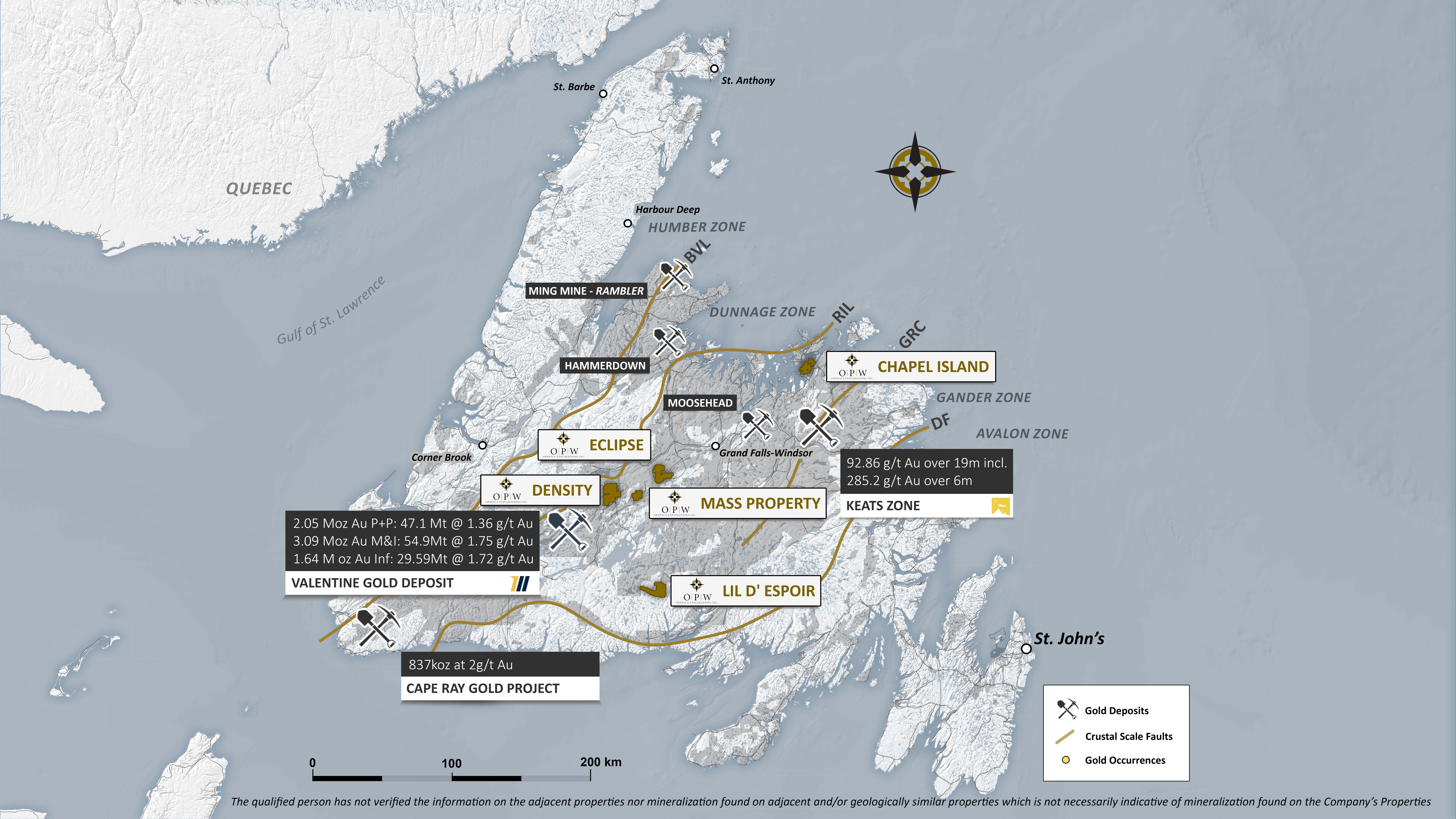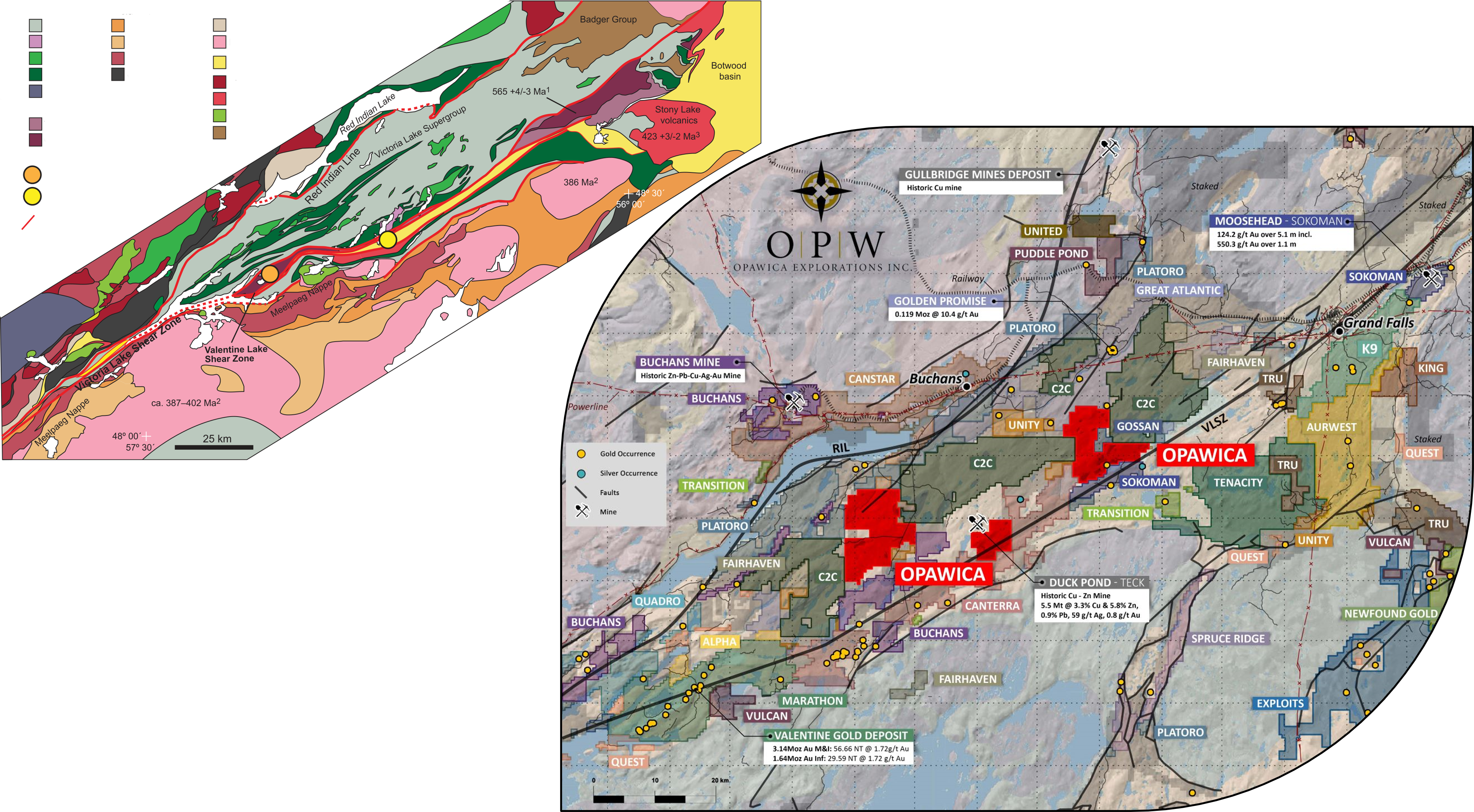Rogerson structural corridor gold district occurs within a northeast-trending structural corridor defined by crustal-scale faults extending from southwestern to north-central Newfoundland.
The presence of conglomerate reflects preservation of syn-orogenic upper crystal clastic sequences commonly associated with orogenic gold vein systems.
The largest known gold resource along this corridor occurs at Marathon Gold Corp.’s Valentine Lake property.
In Marathon’s press release dated April 22, 2020, the Valentine Lake project has estimated proven and probable mineral reserves of 1.87 million ounces (41.05 million tonnes at 1.41 g/t Au) and total measured and indicated mineral resources (inclusive of the mineral reserves) of 3.09 million ounces (54.9 million tonnes at 1.75 g/t Au). Additional inferred mineral resources are 960,000 ounces (16.77 million tonnes at 1.78 g/t Au). †




